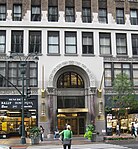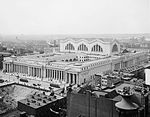Office of the MTA Inspector General
The Office of the Metropolitan Transportation Authority (MTA) Inspector General (OIG) is the Office of Inspector General specific to the Metropolitan Transportation Authority (MTA) that is responsible for conducting monitoring and oversight of MTA activities, programs, and employees. Carolyn Pokorny most recently held the post of Inspector General from 2019-2021.OIG provides oversight and monitors the activities of the MTA in order to ensure a safe, reliable, clean, and affordable public transportation system in the New York metropolitan area. Through its investigations, audits, legal work, and other studies, the OIG works to help the MTA improve its performance and to enhance the quality, efficiency, effectiveness, and safety of its agencies' operations and substantiate allegations of waste, fraud, and abuse.
Excerpt from the Wikipedia article Office of the MTA Inspector General (License: CC BY-SA 3.0, Authors).Office of the MTA Inspector General
Pennsylvania Plaza, New York Manhattan
Geographical coordinates (GPS) Address Nearby Places Show on map
Geographical coordinates (GPS)
| Latitude | Longitude |
|---|---|
| N 40.751388888889 ° | E -73.993055555556 ° |
Address
One Penn Plaza (Penn 1)
Pennsylvania Plaza 1
10119 New York, Manhattan
New York, United States
Open on Google Maps







